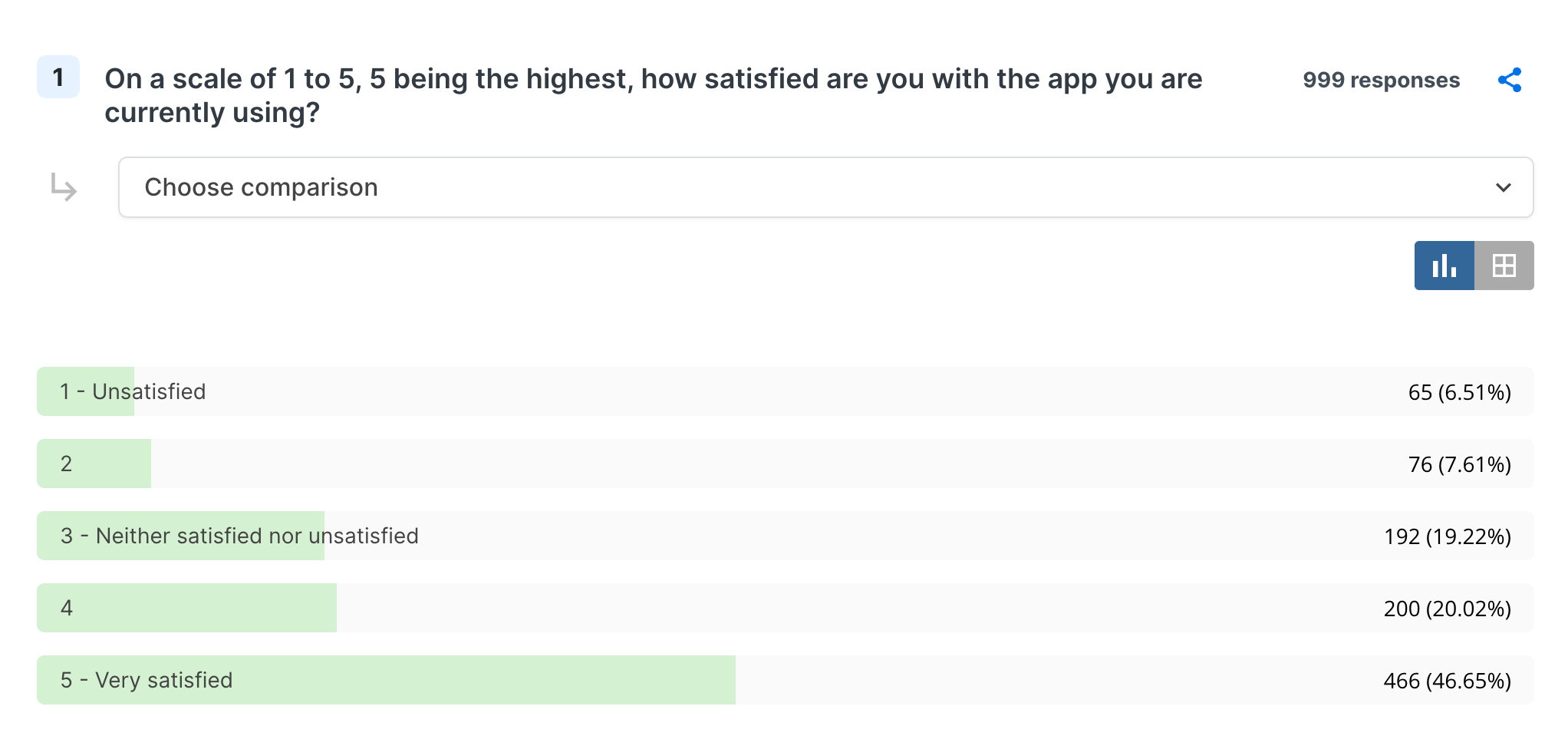How Game Publishers Can Use Their Customer Satisfaction Survey (CSAT) Score To Increase Revenue

Knowing your customer satisfaction score (CSAT) is critical to reducing churn, increasing retention, and boosting DAU and LTV. Do you know what yours is?
Measuring and tracking your customer satisfaction score (CSAT) is vital to your success. It’s a metric that helps you identify happy and unhappy users. It gives you the opportunity to mitigate player churn. And perhaps more importantly, it gives you the opportunity to turn happy customers into raving fans, boosting LTV, increasing IAPs, and of course increasing player acquisition through word of mouth marketing and app store reviews.
CSAT score is a powerful metric every game publisher should be leveraging. But many don’t because they don’t know how. That’s why in this post we’re going to cover:
- What is a custom satisfaction (CSAT) score?
- How do you measure customer satisfaction?
- How do you calculate your CSAT score?
- What is a good CSAT score?
- Pros & Cons of using the CSAT survey?
- Using CSAT surveys to increase your revenue.
What Is A Customer Satisfaction (CSAT) Score?
Customer satisfaction (CSAT) is a measurement that provides a direct insight into how happy or unhappy your users are with a specific interaction or the general experience of your company.
It’s important to understand that tracked over time and measured by itself, CSAT is a powerful metric. But to get the full benefit of this player insight, it’s best when combined with Customer Effort Score (CES) and Net Promoter Score (NPS). Taken together, these three metrics paint a powerful picture of what your users think and feel about your company and product as a whole.
Think of each score as a level of Customer Experience:
- NPS gives you an overview of how your users feel towards your company, and if there are bigger issues that need to be addressed.
- CSAT evaluates how satisfied your users are with your app, specific interactions or processes.
- CES tells you how your users feel about interacting with you and how much effort is involved with the task they are performing - is the interaction & effort easy & painless, or is it complicated & difficult?
How Do You Measure CSAT?
CSAT is measured through a customer feedback survey. This is gathered via one or more variations of the following question:
“How satisfied are you with the app you are currently using?”
Respondents use a 1 to 5 scale to select their answer:
- 1) Very unsatisfied
- 2) Unsatisfied
- 3) Neutral
- 4) Satisfied
- 5) Very satisfied

How Do You Calculate Your CSAT Score
Calculating CSAT is easy. It’s the Total # of Positive Responses divided by the Total # of Responses, Multiplied by 100 which then gives you your percentage of satisfied users. For a 5-point scale, positive responses = 4 and 5 responses (sometimes a 10 point scale is used, but for the sake of this article we’re using a 5-point scale for calculation).
The CSAT Calculation looks like this:
Total # of Response Scores / Total # of Possible Response Scores *100 = ___%
So if we calculate our CSAT score using the CSAT survey data from the above example, this is what we end up with:
666 positive responses / 999 total responses = .67 x 100 = 67%
This tells us that 67% of the users are satisfied with their app - great! But it also indicates that 33% of the users are at risk of churning, which is also great insight because now you have an opportunity to get ahead of the issues your unhappy users are experiencing BEFORE they churn. More on this in a minute.What Is A Good CSAT Score?
So what happens when you get a score of 72? Should you celebrate? Is it time to panic? Every business, product, and service is unique. That’s why benchmarking a CSAT score isn’t a perfect science.
Below are industry benchmarks for CSAT score, according to the ACSI (American Customer Satisfaction Index).
- Apparel: 79
- Automobiles and Light Vehicles: 78
- Banks: 78
- Breweries: 81
- Cell Phones: 79
- Computer Software: 76
- Consumer Shipping: 76
- Credit Unions: 77
- Financial Advisors: 77
- Full-Service Restaurants: 79
- Hotels: 73
- Internet Retail: 78
- Internet Travel Services: 74
- Life Insurance: 78
- Specialty Retail Stores: 77
- TapResearch Gaming: 67*
*Surveyed 1,000 Free to Play (F2P) users across our entire network including casual to Midcore apps (i.e. word and puzzle apps, Social Media apps, more).
Generally speaking, you’ll find that the average score falls in the 75%-85% range.
Adding a follow up question as to why the user gave you the score they did is always a great way to ferret out additional insights. While this will be an open ended question and will cause many to skip and/or leave blank, the few who do leave a detailed answer can prove to be invaluable.
Pros & Cons of Using The CSAT Survey
While the CSAT survey is one you’ll certainly want to bake into your process of gathering player feedback, it’s always good to know what all the pros and cons are to any given survey.
Pros
- Easy to measure so you don’t need to be masterful researcher
- Easy for players to complete - quick and painless
- Produces user-friendly, actionable data
- Most people are familiar with the survey
- You can reward users with virtual currency for completing your CSAT survey
Cons
- Relies on self-reporting - mood of the moment may influence and skew answers
- Limited in depth and detail
- Subject to response bias - responders are usually extremely positive or extremely negative. Neutral tend not to respond.
Using CSAT Surveys To Increase Your Revenue
Most publishers often don’t solicit feedback from an unhappy user until they discover a negative review in an app store or on social media. By this point it’s too late - the damage is done. The user and their potential revenue is gone and worse, they’ve broadcasted their negative experience with your game to the world - possibly hurting new revenue opportunities by hindering player acquisition.
This passive approach of soliciting player feedback has been the only approach to soliciting player feedback, until now.
Using TapResearch’s in-game rewarded surveys, you can now proactively get signals from users that indicate they’re at risk of churning. Indicators like,
- ‘The game’s too hard’
- ‘A boss fight is too tough’
- ‘A new level is too confusing’
- Many more!
By rewarding your user for their time, you get insight that lets you take immediate action to fix what’s troubling your users. Getting this type of insight from unhappy users before they churn is invaluable.
You can essentially put a player-churn warning system in place and create playbooks to handle various scenarios. Instead of playing from behind, you're staying ahead of the game (no pun intended) and putting yourself in position to head-off any users who are at-risk of churning by fixing whatever issues they might be experiencing.
Imagine getting player churn signals and combining them with data points you’re already collecting like:
- Hasn’t played in 3, 5, 10 days
- Is stuck on XX-level
- Player ARPU is ≤ XX
- Session length is shorter than normal
- etc.
The actions you can take with this type of data is a gamechanger.
Think about how your CSAT score would improve if you proactively reached out to the users of your game and remedied the things they didn’t like. That’s how you improve your CSAT score - with proactive player engagement.
The potential impact on your revenue by implementing, tracking, and measuring your CSAT score over time can not be overstated.
Digging Deeper With Player Insights
Getting to know and understand what makes your players tick is key to building and optimizing your game to stand the test of time and generate consistent revenue. With TapResearch's Player Insights platform, you’ll be better able to do exactly that.
The Player Insights tool helps you identify and explore areas of friction within your app and players journey, enabling you to take direct action to help improve not only your CSAT score, but other critical user experience metrics.
And of course, you can’t dismiss the opportunity to learn more about your happy, satisfied players too! They are your brand advocates. By learning more about them, their habits, and what makes them tick, you’ll get additional insight into what is working and what is driving IAPs, which is just as important as learning about what isn’t working. As you know, there is a direct correlation between more satisfied players, increased sessions, retention, and increased monetization.
Conclusion
There is no doubt that knowing what your CSAT score is puts you in position to improve player experience and reduce churn. Collected and analyzed with Net Promoter Score (NPS) and Customer Effort Score (CES), you can put the pieces of the customer experience puzzle together to create a clearer, more holistic picture of your players’ journey, experience and expectations. All of which will help you reduce churn, increase retention, and boost DAU and LTV.
Ready to learn more about TapResearch and how Rewarded Surveys can generate new revenue and growth for your game? Contact us here to learn more.